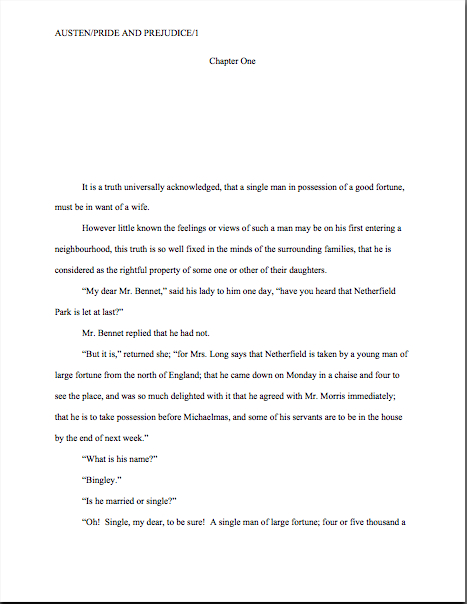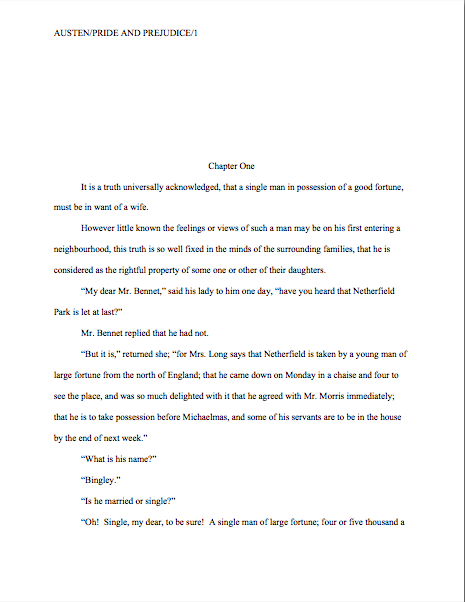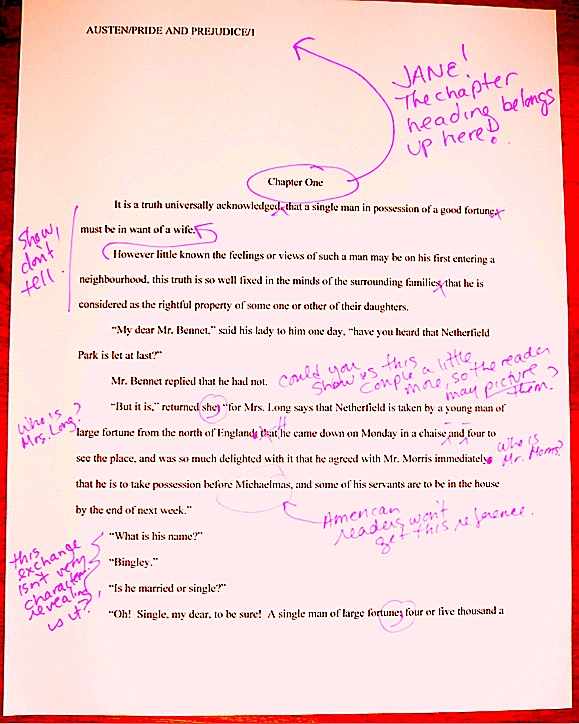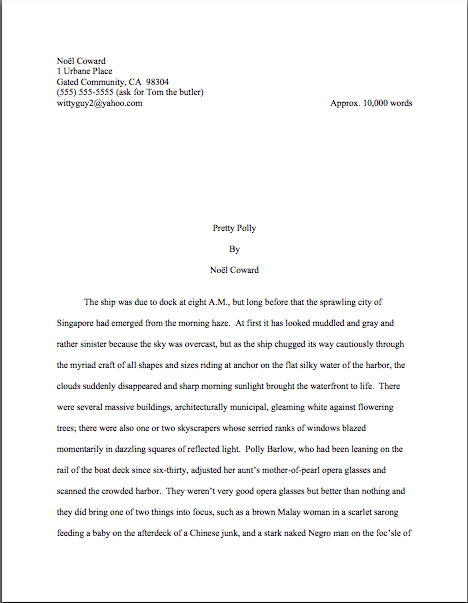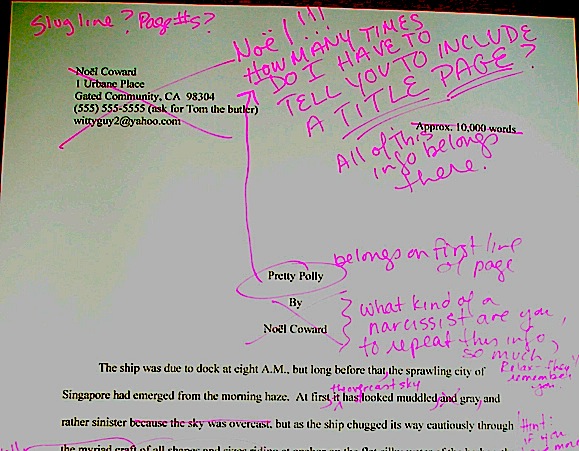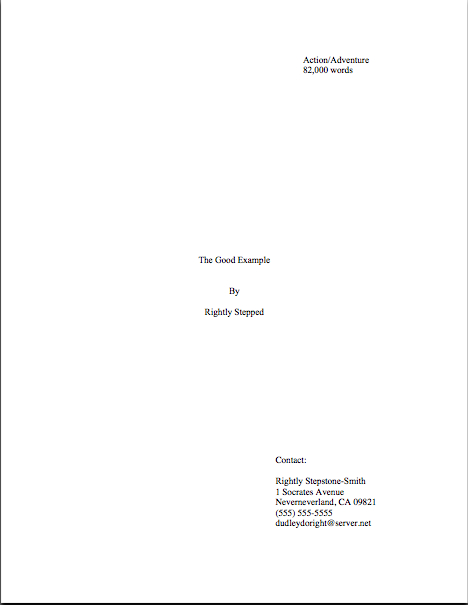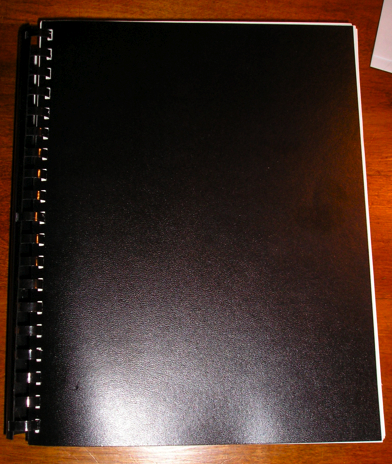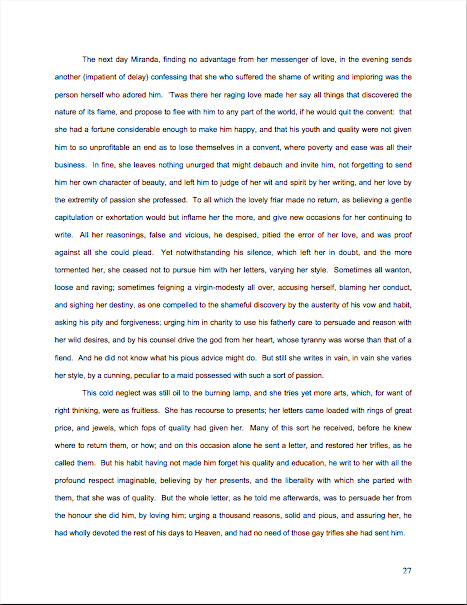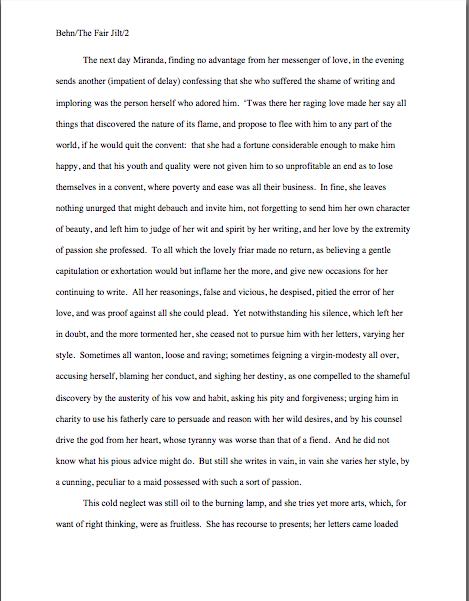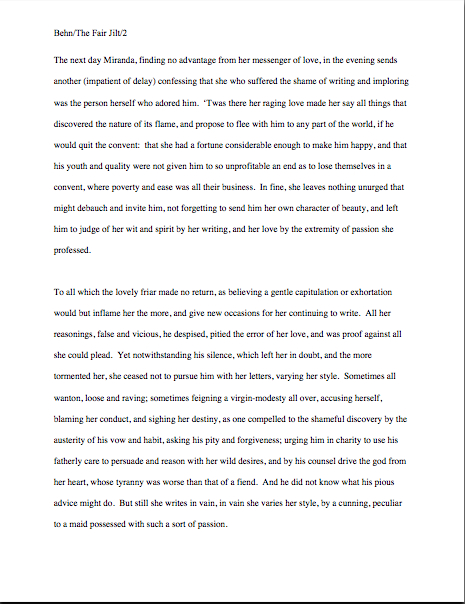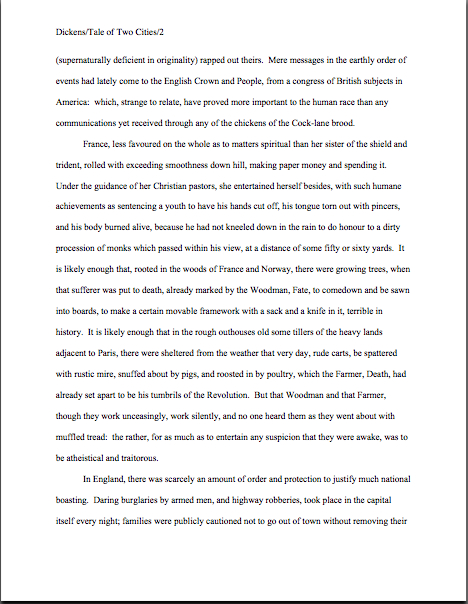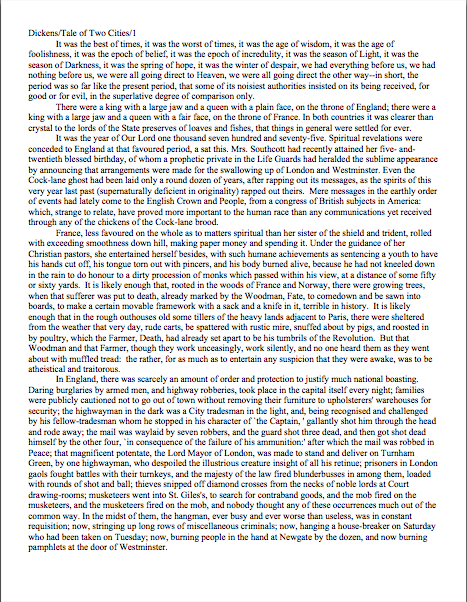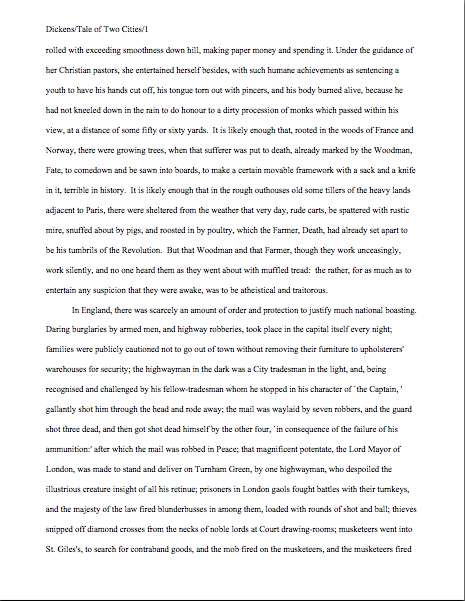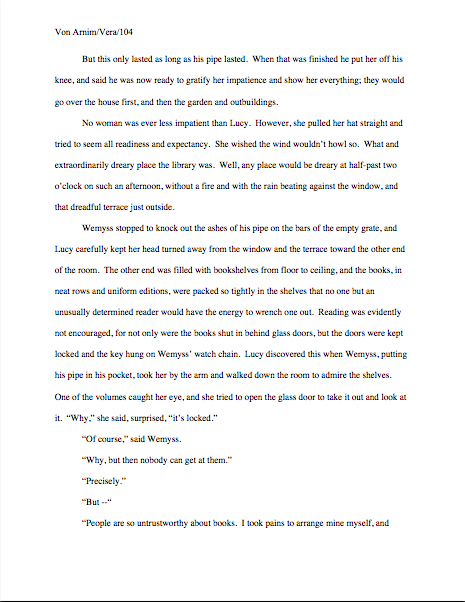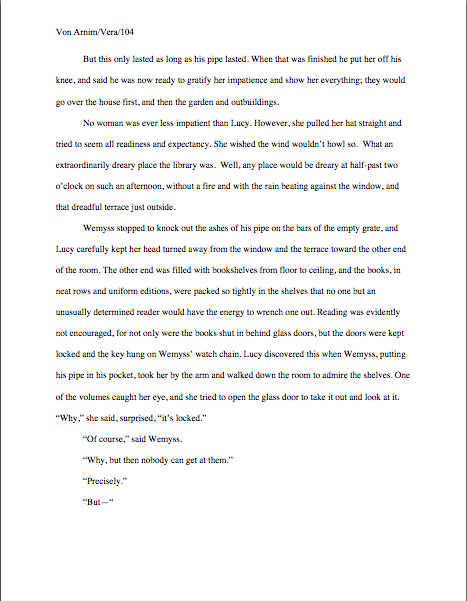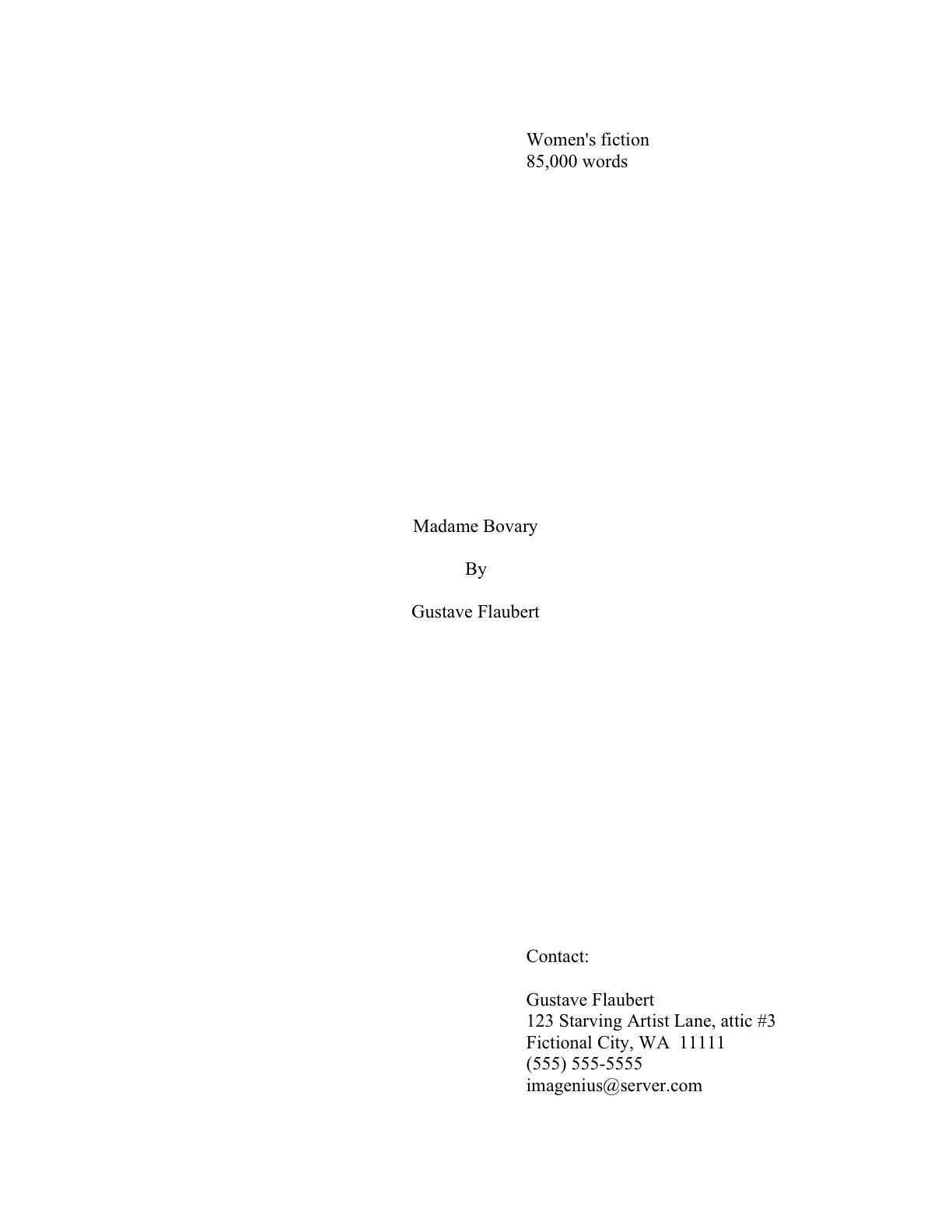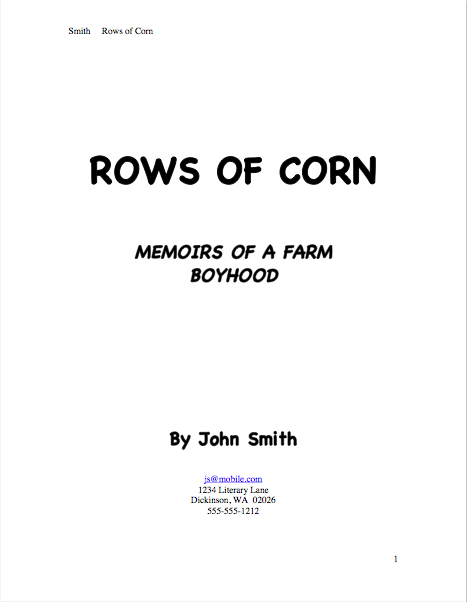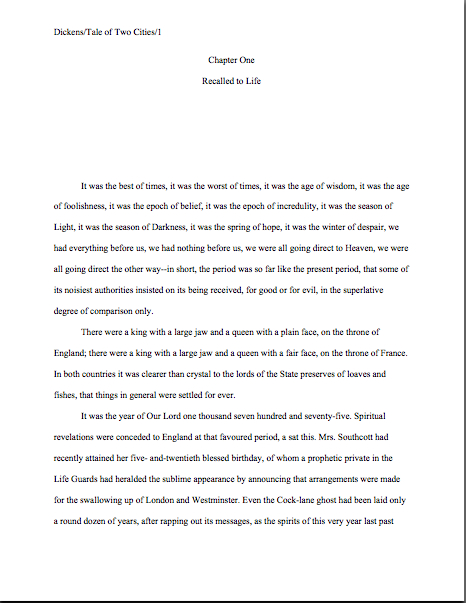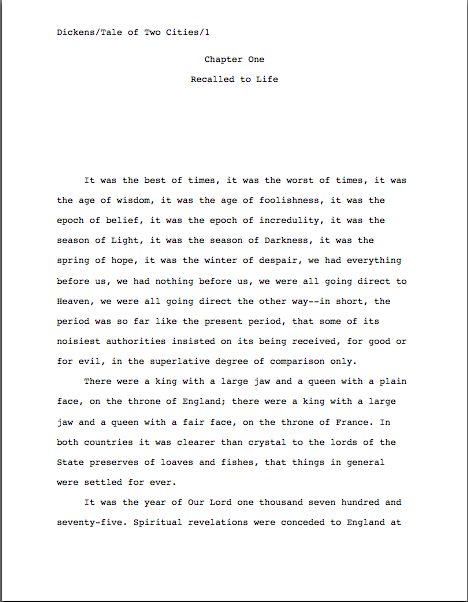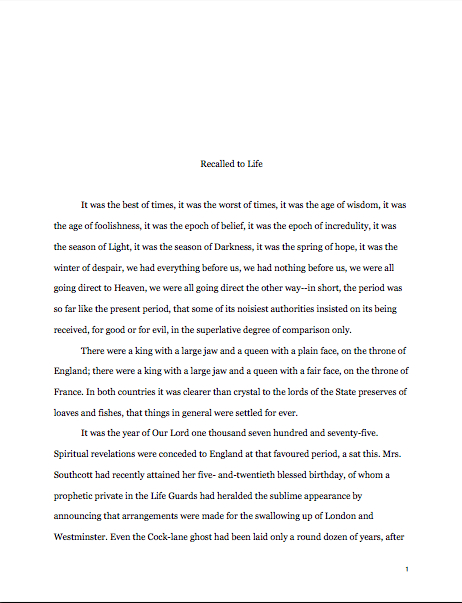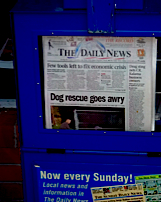I have been in one editing or writing meeting or another ALL day, I’ll have you know, the kind where various well-meaning, highly intelligent people quibble for 45 minutes over how a single sentence of text should be rendered. (Yes, professional writers and editors honestly do spend their time this way, more’s the pity, just as stereotype dictates we should.) Having spent a number of years of my wayward slightly-older-than-youth writing political platforms — yes, some luckless soul gets stuck with that job in every election cycle; did you think that many platitudes could find their way into a single document all by themselves? — I’m rather used to this level of hyper-literal debate, but still, I invariably find it tiring.
It’s not going over the same half-sentence for an hour that I mind; it’s the strain involved in not throwing paper clips at the person who has just made the same objection for the 15th time, apparently for no better reason than that no one else in the room thought it was worth bending to his will the first 14 times he brought it up. Part of the skill set in my line of work involves keeping the paper clips to oneself, after all. To hear me respond the 15th time, you would have assumed that I was in the sunniest of moods.
Butter, as the saying goes, wouldn’t have melted in my mouth.
To reward myself for being on such remarkably good behavior for such a remarkably long time, today I shall tackle the set of Idol rejection reasons (please see the first post in this series for the full list and rationale) that would most naturally occur to anyone doodling on her agenda through the fourth meeting of a very long day: the agents’ euphemisms for being bored by a submission.
I know, I know — yawn-inducing is an epithet couldn’t possibly apply to any of MY readers’ work, since all of you are as scintillating as scintillating can be, both on and off paper. But believe it or not, agents, editors, and their respective screeners routinely report finding many, many submissions snore-fests.
Thus that latte Millicent, the agency screener in my examples, keeps chugging, regardless of the danger to her oft-burnt tongue. She has to do something to stay awake as she’s leafing through the fifty submissions before yours turns up to brighten her day and gladden her heart.
Boring Millicent is one of the most common reasons for rejection at both the submission and query stages, yet interestingly enough, when one hears agents giving advice at conferences about how to guide manuscripts through the submission process relatively unscathed, the rather sensible admonition, “Whatever you do, don’t bore me!” is very seldom heard. Partially, I think, this is due to people in the industry’s reluctance to admit in public just how little they read of most manuscripts before rejecting them.
How little? Long-time readers of this blog, chant it with me now: the average submission is rejected on page 1. Sometimes in paragraph 1, or even sentence 1. As with query letters, submissions arrive at agencies in sufficient volume that screeners are trained to find reasons to reject them, rather than reasons to accept them.
Or, to put it another way, the ones that get accepted are the ones that make it through the lengthy rejection reason gauntlet successfully.
Why isn’t this fact shouted from the rooftops and hung on banners from the ceilings of writers’ conferences, since being aware of it could only help everyone concerned? Well, having met my share of conference organizers, I would imagine it has something to do with not wanting to discourage attendees into giving up. It is a genuinely depressing state of affairs, after all, especially for those who have been querying and submitting for a while, and I can understand not wanting to be standing in a room with 400 writers hearing this hard fact for the first time.
Also, whenever I HAVE heard the news broken at a conference, the audience tends to react, well, a trifle negatively. Which is perfectly understandable, since from an aspiring writer’s point of view, such a declaration almost invariably means one of two things: either the agent or editor is a mean person who hates literature (but loves bestsellers), or that the admitter possesses an attention span that would embarrass most kindergarteners and thus should not be submitted to, queried, or even approached at all. Either way, writers tend to react as though the pro were admitting a personal failing.
My impression, though, is that when agents do make this comment at a conference, they’re assuming that they’re not addressing run-of-the-mill queriers and submitters, but an elite subgroup that has done its homework (and can afford to attend a writers’ conference, which are often rather expensive). As any agent who routinely attends conferences must be aware, the vast majority of queriers and submitters never go NEAR a writers’ conference, or take writing classes, or bother to do some web surfing to try to find out a little something about how the industry works. Most professional readers assume, therefore, that the writers to whom they are speaking are not the ones sending in either the jaw-droppingly rude query letters, the submission filled with misspellings and grammatical mistakes, or the first page that automatically prompts a sleepy Millicent to reach for her coffee.
That may not be a completely warranted assumption — except amongst my readers, of course, every one of whose queries and submissions are exemplary. But the fact is, there’s a reason that mentioning that you heard an agent speak at a conference tends to get a query letter taken more seriously: it’s an indication of homework-doing.
The prevailing assumptions about Millicent’s notoriously short attention span isn’t strictly speaking true, either, She may have a super-short of attention span for the opening pages of submissions, but she’s been known to pore over the 18th draft of an already-signed writer whose work she loves three times over. So has her boss, and the editor to whom they sell their clients’ work. However, since none of the three want to encourage submitters to bore them, they might not be all that likely to admit the latter before a bunch of aspiring writers at a conference.
Something else you’re unlikely to hear: that on certain mornings, the length of time it takes to bore a screener is substantially shorter than others, for reasons entirely beyond the writer’s control. I cast no aspersions and make no judgments, but they don’t call it the city that never sleeps for nothing, you know.
But heaven forfend that an agent should march into a conference and say, “Look, I’m going to level with you. If I’m dragging into the office on three hours of sleep, your first page is going to have to be awfully darned exciting for me even to contemplate turning to the second. Do yourself a favor, and send me an eye-opening first few pages, okay?”
No, no, the prevailing wisdom goes, if the reader is bored, it must be the fault of the manuscript — or, more often, with problems that they see in one manuscript after another, all day long. (“Where is that nameless intern with my COFFEE?” the agent moans.)
As it turns out, while the state of boredom is generally defined as a period with little variation, agents have been able to come up with many, many reasons that manuscripts bore them. Presumably on the same principle as that often-repeated truism about Artic tribes having many words for different types of snow: to someone not accustomed to observing the variations during the length of a long, long winter, it all kind of looks white and slushy.
Here are the reasons the Idol panel gave (and the numbering is from the initial list of 74 rejection reasons):
7. Not enough happens on page 1.
32. Where’s the conflict?
35. The story is not exciting.
36. The story is boring.
38. Repetition on pg. 1 (!)
55. Took too many words to tell us what happened.
57. The writing is dull.
Now, to those of us not lucky enough to be reading a hundred submissions a week, that all sounds like variations on snow, doesn’t it? But put yourself in Millicent’s stylish boots for a momentL imagine holding a job that compels you to come up with concrete criteria to differentiate between “not exciting” and “boring.”
This probably wasn’t the glamour she expected when she first landed the job at the agency.
Actually, all seven of these reasons actually do mean different things from the screener’s side of the submission, so let me run through them in order, so you may see why each is specifically annoying, even if you weren’t out dancing until 4 a.m. All of them are subjective, of course, so their precise definitions will vary from reader to reader, but let’s take a crack at some general definitions, shall we?
#7, not enough happens on page 1, is often heard in its alternative incarnation, the story took too long to start. Many a wonderful manuscript doesn’t really hit its stride until page 4 — or 15, or 146.
And you’d be amazed at how often a good writer will bury a terrific first line for the book on page 10.
The screening process is not, to put it mildly, set up to reward brilliance that takes a little while to warm up — and that’s not merely a matter of impatience on the reader’s part. Remember earlier in the this series, when I urged you to sit in the chair of that burnt-tongued screener, racing through manuscripts, knowing that she will have to write a summary of any manuscript she recommends?
Well, think about it for a moment: how affectionate is she likely to feel toward a story that doesn’t give her a solid sense of what the story is about by the end of page 1?
Sound familiar? It should: very frequently, novel openings are slowed by the various descriptive tactics I described a couple of days ago. On behalf of agency screeners, hung over, sleep-deprived, and otherwise, all over Manhattan: please, for the sake of their aching heads and bloodshot eyes, give the reader a sense of who the protagonist is and what the book is about quickly.
Yes, even if you are convinced in the depths of your creative heart that the book in its published form should open with a lengthy disquisition on philosophy instead of plot. Remember, manuscripts almost always change between when an agent picks them up and when the first editor sees them, and then again before they reach publication. If you make a running order change in order to render your book a better grabber for Millicent on page 1, you probably will be able to change it back.
Or at least have a lovely long argument with your future agent and/or editor about why you shouldn’t.
Speaking of unseemly brawls, #32, where’s the conflict? is an exceptionally frequent reason for rejecting submissions. In professional reader-speak, this objection can indicate either that the opening is well-written, but lacks the dramatic tension that arises from interpersonal friction (or in literary fiction, intrapersonal friction) — or, more frequently, that it’s not clear to Millicent what is at stake, who is fighting over it, and why the reader should care.
Oh, you may smile at the notion of cramming that much information, which is really the province of a synopsis or pitch, into the first page of a manuscript, but to be blunt about it, Millicent’s going to need all of that information to pitch the book to her higher-ups at the agency. Giving her some immediate hints about where the plot is going is thus a shrewd strategic move.
Where’s the conflict? has been heard much more often in professional readers’ circles since writing gurus started touting using the old screenwriter’s trick of utilizing a Jungian heroic journey as the story arc of the book. Since within that storyline, the protagonist starts out in the real world, not to get a significant challenge until the end of Act I, many novels put the conflict on hold, so to speak, until the first call comes.
(If you’re really interested in learning more about the hero’s journey structure, let me know, and I’ll do a post on it. Or you can rent one of the early STAR WARS movies, or pretty much any US film made in the 1980s or 1990s where the protagonist learns an Important Life Lesson. Basically, all you need to know for the sake of my argument here is that this ubiquitous advice has resulted in all of us seeing many, many movies where the character where the goal is attained and the chase scenes begin on page 72 of the script.)
While this is an interesting way to structure a book, starting every story in the so-called normal world tends to reduce conflict in the opening chapter, by definition: according to the fine folks who plot this way, the potential conflict is what knocks the protagonist out of his everyday world.
I find this plotting assumption fascinating, because I don’t know how reality works where you live, but around here, most people’s everyday lives are simply chock-full of conflict. Gobs and gobs of it. And if you’re shaking your head right now, thinking that I must live either a very glamorous life or am surrounded by the mentally unbalanced, let me ask you: have you ever held a job where you didn’t have to work with at least one person who irritated you profoundly?
Having grown up in a very small town, my impression is that your garden-variety person is more likely to experience conflict with others on the little interpersonal level in a relatively dull real-life situation than in an inherently exciting one — like, say, a crisis where everyone has to pull together. And having had the misfortune to work once in an office where fully two-thirds of the staff was going through menopause, prompting vicious warfare over where the thermostat should be set at any given moment, either hot enough to broil a fish next to the copy machine or cool enough to leave meat, eggs, and ice cubes lying about on desks for future consumption, let me tell you, sometimes the smallest disagreements can make for the greatest tension.
I know, I know: that’s not the way we see tension in the movies, where the townsfolk huddled in the blacked-out supermarket, waiting for the prehistoric creatures to attack through the frozen food section, suddenly start snapping at one another because the pressure of anticipation is so great. But frankly, in real life, people routinely snap at one another in supermarkets when there aren’t any prehistoric beasts likely to carry off the assistant produce manager, and I think it’s about time we writers started acknowledging that.
I’m bringing this up for good strategic reasons: just because you may not want to open your storyline with THE conflict of the book doesn’t necessarily mean that you can’t open it with A conflict. Even if you have chosen to ground your opening in the normal, everyday world before your protagonist is sucked up into a spaceship to the planet Targ, there’s absolutely no reason that you can’t ramp up the interpersonal conflict on page 1.
Or, to put it a trifle less delicately, it will not outrage the principles of realism to make an effort to keep that hung-over screener awake throughout your opening paragraphs.
Do I spot some hesitantly raised hands out there? “But Anne,” I hear some courteous souls protest, “I’m trying to show that my protagonist is a normal person, a nice one that the reader will grow to love, and conflict to me means fighting. People are awful when they’re fighting, aren’t they? How do I present my sweet, caring protagonist as likable if she’s embroiled in a conflict from page 1? Is it okay to have the conflict going on around her?”
Ah, you’ve brought up one of the classic nice novelist’s misconceptions, courteous protesters: the notion that what makes a human being likable in real life will automatically render a fictionalized version of that person adorable, a philosophy particularly prevalent in first-person narratives. I can’t even begin to estimate the number of otherwise well-written manuscripts I’ve seen since I began reading professionally where the primary goal of the opening scene(s) is apparently to impress the reader with the how nice and kind and just gosh-darned polite the protagonist is.
Butter wouldn’t melt in her mouth, either.
As charming as such people may be when one encounters them in real life, from a professional reader’s point of view. they often make rather irritating protagonists, for precisely the reason we’re discussing today: they tend to be conflict-avoiders.
Which can render them a trifle, well, dull on the page.
Why, you gasp? Well, since interpersonal conflict is the underlying basis of drama (you might want to take a moment to jot that one down, portrayers of niceness), habitually conflict-avoiding protagonists tend to stand in the way of a plot’s moving forward. Instead of providing the engine that moves the plot forward, they keep throwing it into neutral, or even reverse, in an effort to keep tempers from clashing.
Like protagonists who are poor interviewers (a group I shall be revisiting in the weeks to come, never fear), the conflict-shy have a nasty habit of walking away from potentially interesting scenes that might flare up, not asking the question that the reader wants asked because it might offend another of the characters, or even being just so darned polite that their dialogue doesn’t add anything to the scene other than conveying that they have some pretty nifty manners.
These protagonists’ mothers might be pleased to see them conducting themselves so well, but they make Millicent want to tear her hear out.
“No, no, NO!” the courteous gasp. “Polite people are nice, and polite people really do talk courteously in real life! How can it be wrong to depict that on the page?”
Oh, dear, how to express this without hurting anyone’s feelings…have you ever happened to notice just how predictable polite interchanges are? By definition, they’re generic; given a specific set of circumstances, any polite person might say precisely the same things — which means that if the reader happens to have been brought up to observe the niceties, or even knows someone who has, s/he can pretty much always guess what a habitually polite character will say, and sometimes do, in the face of plot turns and twists.
And predictability, my friends, is one of the most efficient dramatic tension-killers known to humankind.
Don’t believe me? Okay, take a gander at this gallant conversation in a doorway:
“Oh, pardon me, James. I didn’t see you there. Please go first.”
“Not at all, Cora. After you.”
“No, no, I insist. You got to the doorway first.”
“But your arms are filled with packages. Permit me to hold the door for you, dear lady.”
“Well, if you insist, James. Thank you.”
“Not at all, Cora. Ah-choo!”
“Bless you.”
“Thanks. Please convey my regards to your mother.”
“I’m sure she’ll be delighted. Do send my best love to your wife and seventeen children. Have a nice day.”
“You, too, Cora.”
Courteous? Certainly. Stultifying dialogue? Absolutely.
Now, I grant you that this dialogue does impress upon the reader that James and Cora are polite human beings, but was it actually necessary to invest 6 lines of text in establishing that not-very-interesting fact? Wouldn’t it be more space-efficient if the author had used that space SHOWING that these are kind people through action? (“My God, Cora, I can’t believe you risked your life saving that puppy from the rampaging tiger on your way back from your volunteer gig tutoring prison inmates in financial literacy!”)
Or, if that seems a touch melodramatic to you, how about showing dialogue that also reveals characteristics over and above mere politeness? While you’re at it, why not experiment with letting some of that butter in your protagonist’s mouth rise to body temperature from time to time?
Was that giant rush of air I just heard a collective gasp? “But Anne,” a few consistency-huggers out there shout, “you can’t seriously mean to suggest that I should have my protagonist act out of character! Won’t that just read as though I don’t know what my character is like?”
Actually, no — it can be very good strategy character development. Since completely consistent characters can easily become predictable (case in point: characters on sitcoms, who often learn Important Life Lessons in one week’s episode and apparently forget it by the following episode), many authors choose to intrigue their audiences by having their characters do or say something off-beat every so often. Keeps the reader guessing — which is a great first step toward keeping the reader engaged.
And don’t underestimate the charm of occasional clever rudeness for revealing character in an otherwise polite protagonist. Take a look at this probably apocryphal but widely reported doorway exchange between authors Clare Boothe Luce and Dorothy Parker, and see if it doesn’t tell you a little something about the characters involved:
The two illustrious ladies bumped into each other at the entrance to the theatre. As it was an opening night performance and the two were well known to be warm personal enemies, a slight hush fell over the crowd around them.
In the face of such scrutiny, Mrs. Luce tried to rise to the challenge. “Age before beauty,” she told Mrs. Parker, waving toward the door.
“And pearls before swine,” Mrs. Parker allegedly replied.
Polite? Not particularly. But aren’t they both characters you would want to follow through a plot?
“Okay,” my courteous questioners admit reluctantly, “I can see where I might want to substitute character-revealing dialogue for merely polite chat, at least in my opening pages, to keep from boring Millicent. But you haven’t answered the rest of my question: how can I make my protagonist likable if she’s embroiled in a conflict from page 1? What if I just show conflict going on around her, without her, you know, getting nasty?”
For polite people, you certainly ask pointed questions, courteous ones: it means you’re starting to get the hang of interesting dialogue. As you have just illustrated, one way that a protagonist can politely introduce conflict into a scene is by pressing a point that another party to the conversation wants to brush off.
Nasty? Not at all. Conflictual? Definitely.
Not all conflict entails fighting, you see. Sometimes, it’s mere disagreement — or, in the case of a protagonist whose thoughts the reader hears, silent rebellion. Small acts of resistance can sometimes convey a stronger sense of conflict than throwing an actual punch. (For more suggestions on heightening conflict, please see the CONFLICT-BUILDING category on the list at right.)
When in doubt about whether the conflict is sufficient to keep Millicent’s interest, try raising the stakes for the protagonist in the scene. As long as the protagonist wants something very much at that particular moment, is prevented from getting it, and takes some action as a result, changes are that conflict will emerge, at least internally.
Note, please, that I did not advise ramping up the external conflict, necessarily, especially on a first page. In a first-person or tight third-person narrative, where the reader is observing the book’s world from behind the protagonist’s eyeglasses, so to speak, protagonists who are mere passive observers of their own lives are unfortunately common in submissions; if Millicent had a nickel for every first page she read where the protagonist was presented as little more than a movie camera taking in ambient conditions, she wouldn’t be working as a poorly-paid screener; she’d own her own agency.
If not her own publishing house.
Protagonist passivity is not the best way to grab her attention, in other words. Because this is such a pervasive manuscript megaproblem, I have written about it quite a bit in this forum; for more tips on how to make your protagonists more active, please see the PURGING PROTAGONIST PASSIVITY category on the list at right.
Should any of you NF writers out there have been feeling a bit smug throughout this spirited little discussion of protagonist passivity, I should add that the conflict insufficiency problem doesn’t afflict only the opening pages of novels. It’s notoriously common in memoirs, too — as often as not, for the two reasons we discussed above: wanting to make the narrator come across as likable and presenting the narrator as a mere observer of events around him.
Trust me on this one: in both fiction and nonfiction, Millicent will almost always find an active protagonist more likable than a passive one. All of that predictable niceness quickly gets just a little bit boring.
Mix it up a little. Get your protagonist into the game from the very top of page 1.
I have more to say on the subject of boring Millicent, but I feel a well-deserved post-meeting nap coming on. Sleep well, everybody, and keep up the good work!










